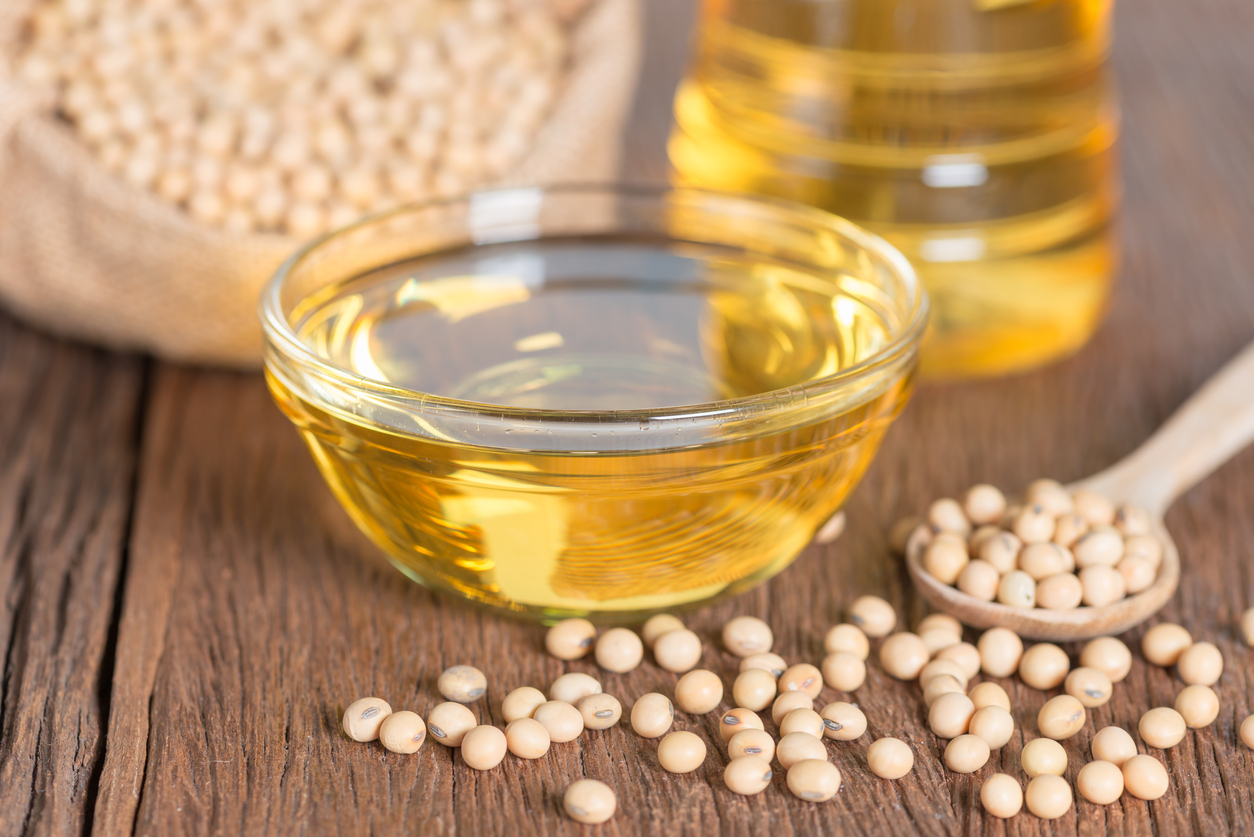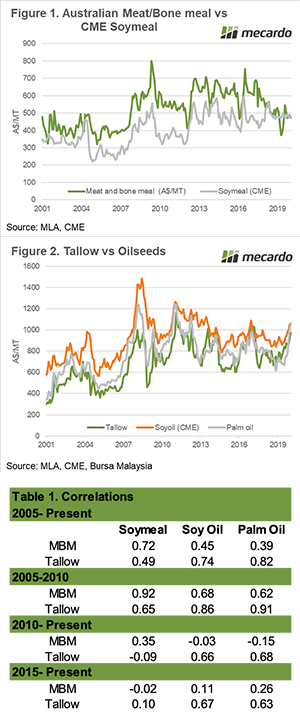We have an offal lot to talk about

Key Points
- Tallow and Meat & Bone meal (MBM) are by products of the slaughtering process.
- MBM follows a similar pattern to Soybean meal, and tallow with palm and soy oil.
- The correlations have been reducing in recent years, especially with MBM.
- There may be a lag effect between MBM and soymeal.
Without sounding like the stereotypical Scotsman, I am a big fan of offal. It’s nutritious and is a good form of recycling. In this analysis, I examine two offal products from the livestock industry – tallow and meat & bone meal. This will provide some insights for livestock producers and those intensive livestock industries.

Let’s start with some definitions.
Tallow is rendered beef/sheep fat, which is solid at room temperature and can be stored for lengthy timeframes without decomposing. Tallow has a wide range of purposes including shop, candles and deep-frying.
Meat and bone meal (MBM) is produced from abattoir waste products which are not suitable for human consumption. The MBM is extensively used in animal feed, with around 650kmt of rendered meal produced in Australia.
Why are we talking about offal? Well, two reasons.
- The livestock price within Australia is part of a complex of different components which all add up to buyers capacity to pay. Offal is one of the many components.
- Many Mecardo subscribers are users of MBM or tallow.
There is a high degree of interchangeability between agricultural products, as in many cases they are replaceable with one another. For instance, I can buy a beef sausage or if unavailable I can replace with pork.
It is, therefore, a valuable exercise to examine which products are potential replacements for MBM or tallow, as they may provide opportunities to hedge price risk.
MBM and soymeal make an obvious bedfellow, as both are used as protein meals in animal feed. In figure 1 the monthly average price for MBM and soymeal is displayed in A$/mt. The two commodities tend to follow a similar pattern.
Tallow is rendered fat, and plant-based oils are a possible replacement. In figure 2, the monthly average price for tallow, soy oil and palm oil are displayed in A$/mt. All three commodities tend to follow a very similar trend. The closest relationship however seems to be between palm oil and tallow.
In my initial analysis, one of the first things that I noticed was that the correlations seem to be reducing over time. During the period 2005-2010 the correlations between MBM/soymeal and tallow/palm-soy were extremely high (table 1).
Whilst tallow still correlates at a reasonable level, MBM has lost its correlation. An initial inspection of the data points towards a potential lag between a movement in soymeal flowing through to local MBM pricing.
It may be that further data analysis may yield promising results to improve the ability to use alternate products for price risk management purposes.
Remember to listen to the Commodity Conversation podcast by Mecardo
What does it mean/next week?:
MBM and Tallow are important co-products in the livestock industry, and equally so to intensive livestock producers.
It must be noted that the data used for MBM was monthly data supplied by MLA. If analysis daily pricing data, it may yield a different response.
For those users of Tallow/MBM, there may be options for hedging price risk using alternate futures contracts such as Soymeal or Palm/soyoil.
The main takeaway however is that both tallow and MBM tend to follow what is happening overseas with their respective ‘partner’ commodities.



